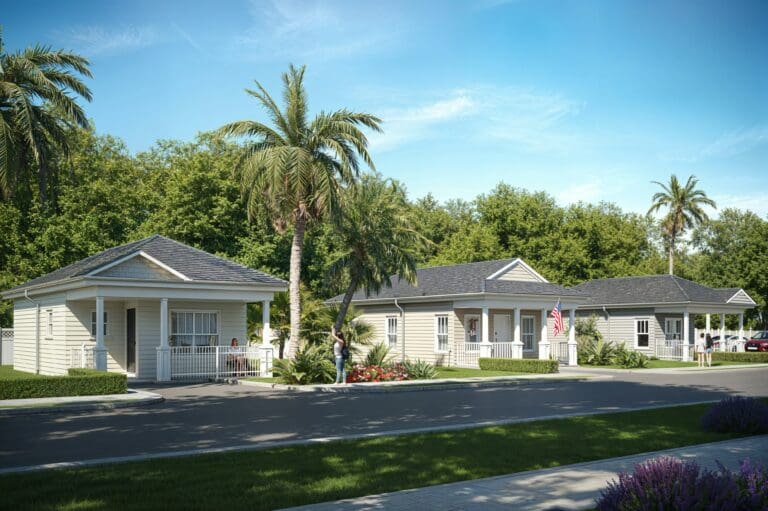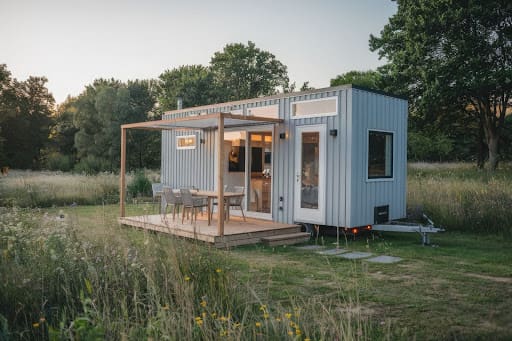The concept of tiny homes has captivated the imagination of many who seek simplicity and sustainability in their living spaces. This growing movement is not just about downsizing but embracing a lifestyle that prioritizes minimalism and eco-friendliness. As housing costs rise and environmental concerns deepen, tiny homes present a compelling alternative for those eager to reduce their carbon footprint and financial burdens.
Understanding the Tiny Home Movement
The tiny home movement has seen a surge in popularity, reflecting a shift towards minimalistic and sustainable living. Born from the desire to simplify life and minimize environmental impact, this movement has expanded significantly, particularly in urban areas like Orlando and Miami. Tiny homes address the challenges of high living costs and limited space, offering a practical solution for modern living. These compact dwellings not only advocate for a minimalist lifestyle but also contribute to sustainable living by reducing energy consumption and material waste.
Tiny homes are increasingly recognized as a viable option for affordable housing. In cities such as Tampa and St. Petersburg, where real estate prices continue to rise, tiny homes provide an accessible alternative for many individuals and families. By occupying a smaller footprint, these homes enable ownership in desirable areas without the financial burden typically associated with traditional housing.
Establishing a Realistic Budget
Building a tiny home requires careful financial planning. The cost of constructing a tiny home can vary widely, typically ranging from $30,000 to $60,000, influenced by factors such as location, design, and materials. In places like Jacksonville and Miami, where land prices fluctuate, these costs can vary significantly.
Securing financing for a tiny home project might necessitate exploring alternative options, such as personal loans or specialized tiny home financing programs. Potential homeowners can save costs by opting for pre-fabricated designs or sourcing recycled materials, ensuring quality is maintained throughout the process.
Finding the Right Contractors and Suppliers
Selecting the right contractors and suppliers is a crucial step in embarking on a tiny home project. It is essential to choose contractors with experience in building tiny homes and a history of successful projects. Prioritizing sustainable materials aligns with the eco-friendly ethos of the tiny home movement. Evaluating suppliers for quality and reliability ensures that your home is built to last.
Designing Your Tiny Home
Design is vital in maximizing the functionality of small spaces. Popular design trends in tiny homes include open floor plans, large windows for natural light, and multifunctional furniture. These elements create an illusion of space and enhance livability. Optimizing space and storage is crucial, with creative solutions such as built-in shelves and foldable furniture becoming increasingly popular. Multifunctional furniture, like sofa beds and extendable tables, can significantly enhance the usability of your tiny home.
Navigating Zoning Laws and Building Codes
Understanding local zoning laws is a critical step in the tiny home construction process. Regulations can vary greatly between cities, affecting where and how tiny homes can be built. Common challenges include restrictions on minimum dwelling sizes and land use. Familiarizing yourself with these legal requirements is essential to avoid potential issues.
Planning the Construction Timeline and Milestones
Constructing a tiny home typically involves several phases, including design, permitting, and building. Realistic timelines for each phase can vary, but a typical project might take anywhere from three to six months. Potential delays, such as weather conditions or supply chain disruptions, should be anticipated and managed effectively. Setting clear milestones helps keep the project on track and ensures that all parties are aligned throughout the process.
Ensuring Energy Efficiency and Sustainability
Sustainability is a cornerstone of the tiny home movement. Employing sustainable building practices, such as using eco-friendly materials and energy-efficient features, can significantly reduce the environmental impact of your home. Solar panels and rainwater harvesting systems are popular choices for enhancing sustainability. These features not only lower utility costs but also contribute to a smaller carbon footprint, aligning with the broader goals of the movement.
Preparing for the Lifestyle Transition
Transitioning to a tiny home lifestyle involves both psychological and practical changes. Downsizing possessions and decluttering are essential steps in adapting to a smaller living space. Maximizing comfort and functionality requires thoughtful organization and prioritization of essential items. Many individuals who have embraced tiny home living report a heightened sense of community and connection with like-minded individuals. This sense of community can be particularly strong in areas like Orlando and Tampa, where tiny home enthusiasts often gather to share experiences and advice.
Exploring Financing Options
For many, financing a tiny home can be a significant hurdle. Traditional mortgages may not be available, so exploring alternatives such as personal loans, RV loans, or even crowdfunding might be necessary. Some financial institutions now offer loans specifically designed for tiny homes. It’s important to research and compare different options to find the best fit for your financial situation.
Choosing the Right Location
Selecting the right location for your tiny home is crucial, as it affects not only your lifestyle but also your home’s value. Consider factors such as proximity to work, access to amenities, and community support for tiny homes. Urban areas might offer more opportunities for social interaction and services, while rural locations could provide a peaceful retreat. Understanding the local climate and environmental conditions is also essential for planning energy-efficient features.
Embracing a Minimalist Mindset
Living in a tiny home requires embracing a minimalist mindset. This involves letting go of non-essential items and focusing on what truly adds value to your life. It’s a journey towards intentional living, where every possession serves a purpose and contributes to your well-being. This shift can lead to greater contentment and freedom, as you learn to prioritize experiences over material possessions.
Adapting to New Social Dynamics
Living in a tiny home can change your social dynamics, as the limited space may affect how you host guests or entertain. It can also foster closer connections with those who share your living space. Engaging with the tiny home community can provide support and inspiration, as well as opportunities for socializing through meetups and events.
The tiny home movement offers a compelling alternative to traditional housing, particularly in urban areas like Florida’s major cities. By focusing on sustainability, affordability, and community, tiny homes present a viable solution for those seeking a simpler and more eco-friendly lifestyle. This journey requires careful planning, from budgeting and design to legal considerations and lifestyle adjustments. Embracing the challenges and rewards of tiny home living can lead to a more intentional and fulfilling life.
To learn more about how you can embark on your tiny home journey, reach out to One & Only Tiny Homes today. Our team is ready to guide you through every step of the process, ensuring your dream home becomes a reality.


